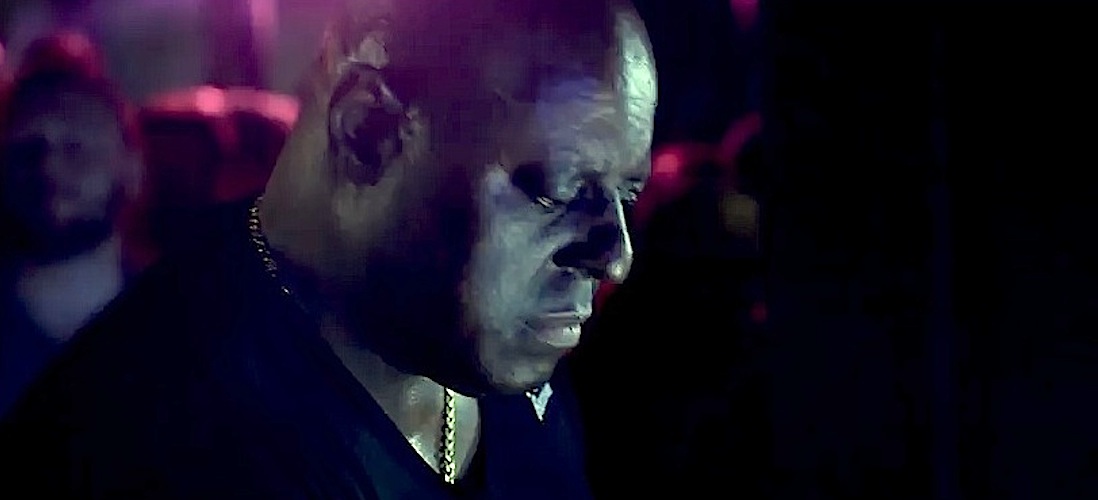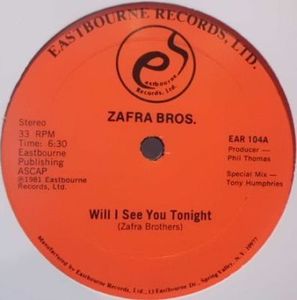In Conversation: Tony Humphries
The fabled progenitor of the Jersey house sound chats with Dennis Kane about the early years. Bonus: five essential tracks.

In Conversation: Tony Humphries
The fabled progenitor of the Jersey house sound chats with Dennis Kane about the early years. Bonus: five essential tracks.

Dennis Kane is one half of the Siren duo (with Metro Area‘s Darshan Jesrani) and the man behind the Disques Sinthomme and Ghost Town labels. He’s back to chew the fat with dance music’s movers and shakers, the iconic house hero Tony Humphries serving as this month’s subject.
His impact has been so significant and wide ranging that it’s hard to know where to begin with a legend and giant like Tony Humphries. From his days as a radio DJ on Kiss FM, to his residency at the legendary Club Zanzibar, to his work as a remixer and producer (Roundtree‘s “Hit On You,” Fresh Band’s “Come Back Lover,” Mtume’s “Juicy Fruit” and Visual‘s “The Music Got Me,” just to name a few), or his influence on Europe via his gigs with Danny Rampling or his residency at Ministry of Sound, he’s one of the major figures of dance-music history. Norman Jay, the late Frankie Knuckles, DJ Harvey—the man they all big-up for paving the way with his unique and broad selections and pioneering contributions to “Garage style” and the “New Jersey Sound” is Tony Humphries.
Contrary to myth, Humphries is from Brooklyn, not New Jersey. He was born into a musical family: His father, Rene Grand, was a bandleader and contemporary of giants like Tito Puente, Henry Fiol, and Willie Colon. Humphries started collecting music from an early age, setting him on a path that would eventually lead him to drop a mixtape on Shep Pettibone, which led to his years of being a mixmaster DJ on Kiss FM. For those who aren’t from NYC, (or at least in range of its airwaves) it is hard to describe the impact of Humphries’s show at the time. It was where you got schooled. As a student in Philadelphia I would—if the reception was decent—tape the show, along with DJ Red Alert’s, thinking I was privately doing my homework. I was surprised and chagrined coming to NYC and seeing cassettes of his weekly mixes being sold in the East Village and on Canal Street.

I never made it to Zanzibar, but talking to those who were there, you get a sense of the magnitude of the place. Humphries’s playing, along with that of Hippie Torales and Tee Scott, ushered in a new moment. In a rundown spot in Newark, the utopian dreams of the Paradise Garage got a second—and different—wind.
I have had the good fortune to get to know and talk with Tony over the years, and although not a press- or publicity-driven person, he was kind enough before catching a flight to Tokyo to sit down and chat.
Tony, what’s the first memory you have of recorded music in your life?
When I was five or six, I was fascinated by the spindle on the record player. It was just a visual. In terms of sound and being hooked, “Get Ready” by Rare Earth or “Magic Carpet Ride” by Steppenwolf. Lyrically, “You’re All I Need to Get By” by Marvin Gaye and Tammy Terrell. It was a great time for radio—so much good music was popular music.
When did the notion of playing records become a possibility?
Well, back in Easy New York we had a lot of basement parties, and I was always the guy with 45s. I wasn’t mixing, but I loved choosing records and making people dance.
When was the first time you saw someone DJing in public with two turntables?
That was in the park, and then at this upstate ski lodge in the Poconos—this guy was mixing seamlessly, and it intrigued me how he kept the groove going. Soon after I started going to Downstairs Records and getting two of everything, just so I could practice. I would work on mixing intros—I drove my Mom nuts. The mobile jocks were also around, there was DJ Jones, Flowers, etc.
Then, my first year at college, I started to get into it at Borough Hall in Brooklyn, we had student parties where you would get a 90-minute or two-hour set. It was fun and, while there I made some good pals including Lionel Rosemont who was known as LY; he did “Back 2 Zanzibar” with Jovonn. We also set up our system on a basketball court on Linden Boulevard. It was like a battle to see who could get the electricity first from the light post—you had better show up early! I remember playing [Double Exposure’s] “Ten Percent of Nothing” or [Milton Hamilton’s] “My Love Supreme”—those were some of my jams.
Those are such big powerful songs, and really a big-band sound.
I was amazed at the reaction to “Ten Percent.” I really appreciated the Cayre Brothers [Salsoul Records’ founders]; they had this hybrid of soul and Latin, and it was tough and elegant. They put a lot behind it from a production standpoint.
There was a lot of hybrid sounds at the time, songs like “Yellow Sunshine” became a b-boy classic but also had this hippy vibe and lyrics like ‘”Move with the colors.…”
Well, who would think Yellow Magic Orchestra’s “Computer Games” would thrive in the Bronx?
“There was this joyful explosion of technology and experience—it was a new social moment with a lot of innocence.”
In retrospect, it seems like DJs were going out of their way to experiment with a variety of sounds and genres.
There was this joyful explosion of technology and experience—it was a new social moment with a lot of innocence. People were happy to have a good time; things weren’t so regimented.
So how do you go from playing in the park to “this is what I am going to do with my life”?
I guess it was after Shep [Pettibone] called me. I had DJed for fun and was doing the mobile thing; you either made some money or you didn’t. I had a friend take a tape over to Shep, he needed someone to fill in on the air. Once that got going for me I could see a future. Shep started teaching me how to edit, and it suddenly was more than playing records.
That’s in ’82, ’83?
Yes, and then Larry Patterson said to me, “Come check out this spot in New Jersey,” and I was like, “Jersey?” [laughs] When I walked in, though, my first thought was, I hope no one else finds out about this. It reminded me of the Garage; I was very impressed. So I was doing Zanzibar and Kiss…and it was a hustle.
You were very quickly identified for playing a broad and eclectic range of music—was that an approach you premeditated?
Well, you have five boroughs, and a city made up of every conceivable type of person, and there were a legion of DJs. You went to all the different stores or perhaps you were part of a record pool; there was competition for records but also you wanted to be distinct. And also, I guess I always had a real appreciation for a whole range of music, and I thought why not have my sets reflect that?

Being at Zanzibar, did you get the feel of a distinct Jersey sound emerging?
There were a number of house producers coming up; I liked quite a few of the records. there was a certain groove I would try and build, using records to bridge to others, a vocal to an instrumental and vice versa, keeping a flow—I liked how that built the dancefloor.
You were playing on Thorens turntables, right?
Yes, and the first time it was rough. They are belt driven, not direct, so it takes a certain finesse and touch to line the songs up. I would look for songs that could help with a mix, that have certain parts that flowed easily. I would be going through what I could get from [East Orange, NJ record shop] Movin’ Records, and mix newer things with classics.
You were starting to spend more time in the studio as well?
Actually, I had been in the studio before the DJ thing went off. The first thing I mixed was Terri Gonzalez’s“Hunger for your Love,” and then the Zafra Brothers. The studio opportunities expanded from that.

Tony, how do you see your approach as a DJ changing in today’s climate?
Now, things seem a bit homogenized, I value my past, and the idea of moving through genres and creating a versatile mix that reflects all the places I have been—and also going into the new, stuff that I am just getting up on. I also believe in letting the records play; I have used overlays, and teased songs coming in, etc….but you don’t want to overmix. I liked [David] Mancuso’s feeling that a song should be good from beginning to end. Certain songs obviously lend themselves to using a break or intro, but certain songs you have to admire and let breathe, especially when they feature live instrumentation. Technique can be dramatic, but the time has to be right.
Five Tony Humphries Classics
Tony Humphries’s discography is a bit overwhelming, as are the number of classic songs closely associated with him. I suggest you spend some time at YouTube or Discogs to get a proper perspective of just how much he has done, and how many songs he helped make. Below, I pick five that always have been favorites.
Fresh Band “Come Back Lover” (Are ‘n Be)
Disco as clean as it gets. Crisp and movin’ with a great smooth vocal, nice keys, rhythm guitar, bass and bongos. Tony’s mix heightens the drama and makes it even more floor-ready. Essential.
Visual “The Music Got Me” (instrumental) (Prelude)
Proto-house from NYC, Boyd Jarvis and Timmy Regisford on production; Tony Humphries sure-shot mix. Spacious keyboard-driven tribal funk, it hints at where house music is going to be. I like the instrumental version—Tony’s mix shines, again crisp and modern, great breakdown. Move! Free your Body!
Cultural Vibe “Ma Foom Bey” (Love Chant Version) (Easy Street)
A huge record with tremendous impact—an easy island groove, a haunting chant, all kinds of space, connecting to some elemental and nocturnal vibe. A high watermark for house music here. I like how laid-back the Love Chant version is.
LY “Back to Zanzibar” (King Street Mix) (Nite Grooves)
Not actually a mix by Tony, but a song by his old pal Lionel Rosemont produced by Jovonn. A song that celebrates the work done by Tony and the Zanzibar crew. A beautiful, sparse house jam with a languid synth. “Where we hanging out tonight? We’re gonna see Tony… at Zanzibar”
Roundtree “Hit On You” (dub version) (Aria)
It gets no better than this, nasty, funky, swinging, with a bad-ass bass line. Tony’s remix brings all the goodness front and center—a huge dramatic jam. If this doesn’t wake up the floor—call a cab!
The recentMangiami: La Compilation(Golf Channel) features a mix from Tony Humphries; you can catch the DJ in action at the below gigs.
11/13 A Club Called Rhonda @ Los Globos, LA
11/14 Salted with Miguel Migs and Julius Papp @ Mighty, San Francisco
11/15 Queen! @ Smart Bar, Chicago
11/21 Cielo with DJ Spun, NYC
Support Independent Media
Music, in-depth features, artist content (sample packs, project files, mix downloads), news, and art, for only $3.99/month.

